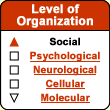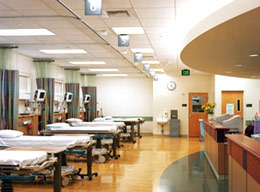|
|


If you work at night,
you run a greater risk of suffering from diabetes, obesity,
and cardiovascular disease. For example, one Swedish study
has shown that the more people eat their meals at night,
the higher their blood cholesterol levels, even if they eat
exactly the same diet as people who are active in the daytime!
One factor that might be involved in this phenomenon is cortisol,
a hormone whose secretion peaks just before you wake up. Cortisol
increases your body’s temperature and prepares it to
digest your breakfast. Thus, at 3:00 or 4:00 AM, when people
who work night shifts typically eat their main meals, their
cortisol concentrations may not yet be at their optimal levels.
Their bodies simply may not be prepared to receive and process
the food and hence may not metabolize it properly. |
|
|
The human biological clock has evolved
over millions of years so that we are adapted to the alternation
of day and night. Hence this
biological clock does not naturally facilitate activity during
the nighttime, and the major changes that night workers must
make in their periods of sleep and wakefulness cause a misalignment
between their activity/rest cycle and their endogenous circadian
oscillator.
This oscillator governs most of the body’s
natural rhythms, including those of sleep
cycles, physiological functions, hormone secretion, and alertness.
When people have to operate against their normal circadian cycles
for extended periods, all of these functions can be disturbed.
Why is it so hard for night workers to simply
invert their internal biological clock and adjust to nighttime
activity? The reason seems to lie in the cues that they receive
from their external environment, and in particular, from daylight.
The artificial light in a typical office or factory produces illuminance
values of about 300 to 400 lux, but that is very little compared
with daylight, which produces values about 50 times higher at dawn
and up to about 500 times higher at noon. Thus if night workers
are exposed to even just a small amount of daylight (for instance,
while travelling to or from work), that seems to be enough to keep
their internal clocks synchronized to the natural day/night cycle
of the outside world. Apparently, this clock always synchronizes
itself with whatever light source is sending it the strongest signals.
Knowing this, researchers have conducted
numerous experiments to try to “trick” the body’s
biological clock, usually by increasing the intensity of the artificial
light to which night workers are exposed on the job while minimizing
their exposure to daylight everywhere else. And the trick works
fairly well: just as long-distance air travellers adjust to their
destination time zones essentially by being exposed to the daylight
there, these night workers adjust their biological clocks to the
artificial light in their brightly lit workplaces–so successfully
that their alertness peaks at night while they are at work, rather
than in the daytime, when they are asleep in their darkened homes.
A typical
example of one of these studies dealt with nurses working
regular night shifts at hospitals in Quebec. These workers
were divided into two groups. The test group were exposed
intermittently to bright, full-spectrum white light for the
first six hours of their shifts. They were also asked to
wear dark glasses while travelling home and, once they got
there, to remain in darkness for eight hours.
Meanwhile, the control group continued to work in their
usual lower-intensity light. They too were asked to remain
in darkness for eight hours after they got home. |
|
After the members of the test group had worked
their regular night shifts for about three weeks, they had adapted
to their nighttime schedules completely, as measured by their circadian
curves for physiological parameters such as body temperature, melatonin
level, and salivary cortisol. The control group displayed only
partial adjustments in all these parameters. The members of the
test group also slept significantly longer during the daytime than
their counterparts in the control group.
Such studies show that a carefully calibrated
schedule of exposure to light and darkness can help workers adjust
their biological clocks more completely to nighttime work while
improving their daytime sleep. Employers should act on such findings
to reduce the effects of night shifts on workers’ health.
|
|





